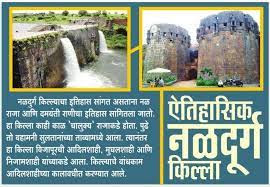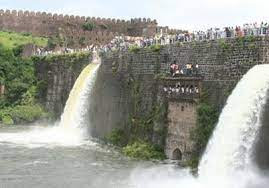Naldurg Fort
Name : Naldurg
Type : Bhuikot
Climbing range : Extremely easy
Venue : Osmanabad, Maharashtra
Nearby villages : Solapur, Tuljapur, Naldurg village
Current status : Fine
Naldurg is the largest fort in Bhuikot fort in Maharashtra. Its embankment is about 3 km. Is spread far and wide. There are 114 towers in this rampart. Along with the forts and water forts of Maharashtra, there are many distinctive forts or Bhuikot forts. One of the most important of these Bhuikot forts is Naldurg. This fort is a protected monument of the Archaeological Department of the Government of Maharashtra. It also includes some Hindu temples like Ganpati Mahal, Lakshmi Mahal which are attractive to see. The fort is also famous for its waterfalls.
How to go :
Naldurg fort is located in Tuljapur taluka in Osmanabad district. Naldurg is located on the Pune-Hyderabad National Highway. After leaving Solapur for Hyderabad, 50 km. Naldurg village is in the distance. It was also given the name during the Nizamshahi period. Later the fort was captured by the Nala king and the name of Aliabad was changed to Naldurg.
History :
The locals carry the history of Naldurg to Nal Raja and Damayanti Rani. This fort was in the possession of the Chalukya king of Kalyani. Later it came under the control of the Bahamani Sultans. The Bahamani kingdom was overthrown and Adilshahi of Bijapur, one of the Shahs formed from it, captured Naldurga. Later, the Mughal emperor Aurangzeb conquered Naldurg and handed over the responsibility to the Nizam of Hyderabad.
Places to see on the fort :
The present Naldurg fort was built during the reign of Adilshah. There is a large moat around the fort for protection. It has a double wall on the inside. The plateau on the side of the fort is fortified as a battlefield. The moat between Ranmandal and Naldurg has been deepened and contains water. This water was diverted to the moat by blocking the flow of the river Bori. In order to retain this water, a dam-like wall has been constructed between Ranmandal and Naldurg. This wall permanently stores water in the trench. Therefore, the enemy cannot enter the fort from this side. Inside, there is a strong rampart connected by hundreds of bastions, creating a harmony between the moat and the river. We see the construction of different sized, different types of bastions. We remember the characteristic Navburuj.
The bastion is located in the ramparts along the Hyderabad highway. This beautiful bastion has nine petals. This is why it is called Navburuj. Such construction is not seen anywhere else. The dam, which has a water palace in Naldurg fort, is a tourist attraction. There is a water palace in the dam connecting Ranmandal and Naldurg. This dam is 19 to 20 meters high. The dam has four floors. There are steps to get to this floor in the belly of the dam. The water palace is built at half height in the belly of the dam and its windows are decorated with ornate arches. It has a Persian inscription on the wall. The inscription says that if you look at this water palace, the eyes of your friends will light up happily and the eyes of your enemies will be darkened. When the water level rises during the monsoons, there are two ways for them to pass through the dam, male and female.
Naldurg fort is well known for its structure, defense system, watchtower, long cannon, curved path of the door, etc.
Photos :








